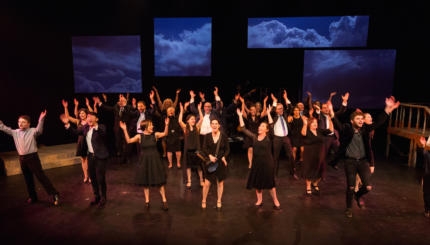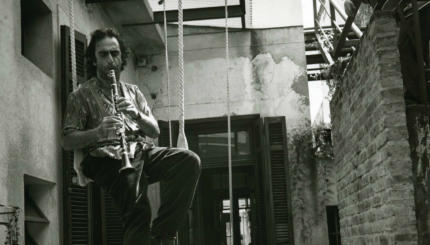One of my main goals in writing
The Inquisitor’s Apprentice
was to bring the Lower East Side to life for my own kids and make it a place they’d want to visit and learn more about. And what brings the past to life better than food, music, and theater?
Of course there’s a plethora of great books about every aspect of life on the Lower East Side. But here — as cultural comfort food for the soul — are my favorite books about food, klezmer, and Yiddish theater.
The best book bar none about food on the Lower East Side is Jane Ziegelman’s
97 Orchard: An Edible History of Five Immigrant Families in One New York Tenement
. Ziegleman turns bare bones menus into a comprehensive account of how immigrant families worked, shopped, ate, and lived on the Lower East Side. Her portraits of the five
 families are sensitive, beautifully written, and at times deeply moving. And the book is packed to the gills with gems of forgotten culinary history. Such as the fact that shmaltz was mostly made with goose fat until the 1930s, when Jewish gangsters began to run illegal chicken farming operations near the East River. Who knew?
families are sensitive, beautifully written, and at times deeply moving. And the book is packed to the gills with gems of forgotten culinary history. Such as the fact that shmaltz was mostly made with goose fat until the 1930s, when Jewish gangsters began to run illegal chicken farming operations near the East River. Who knew?
There are a number of excellent books about Klezmer, but my favorite is David Saposnik’s Klezmer! Jewish Music from Old World to Our World. As someone who grew up in folksinging circles where people bragged about having known Bobby Zimmerman ‘back when’ or made out in the back seat of a car with Pete Seeger (true story, seriously), I really enjoyed the way Saposnik blends the history of klezmer with a firsthand account of the Klezmer revival and its ties to the larger folk music scene.
Stefan Kanfer’s
Stardust Lost: the Triumph, Tragedy and Meshugas of the Yiddish Theater in America
might just be my favorite nonfiction book of the last decade. There is a charm to this book which is difficult to describe. Sure, Kanfer has great material to work with: the glamour of Thomashevsky, the star power of David Kessler, the terrible irony of Yiddish theater reaching its apex as an art form just as the gates to Ellis Island were slamming shut.
But Kanfer brings a light touch to his material, and a prose style that combines humor and tragedy almost as deftly as the great artists he writes about. Stardust Lost is one of the very few nonfiction books that I’ve actually reread just for the sheer fun of it.
Nahma Sandrow’s much heftier Vagabond Stars: a World History of Yiddish Theater is less of an introduction to Yiddish theater than a sumptuous banquet for those who already know and love it. She chronicles major and minor figures, covering material that might only get a cursory mention in more general histories. Her writing is scholarly yet highly readable. And the book is a treasury of delicious stories about the flamboyant lives and scandalous loves of Yiddish theater’s famous and not-so-famous. If there are any Yiddish theater fans on your Hanukkah list, this is a book they’ll want to curl up with on a cold winter evening.
Hanukkah
Pronounced: KHAH-nuh-kah, also ha-new-KAH, an eight-day festival commemorating the Maccabees’ victory over the Greeks and subsequent rededication of the temple. Falls in the Hebrew month of Kislev, which usually corresponds with December.


